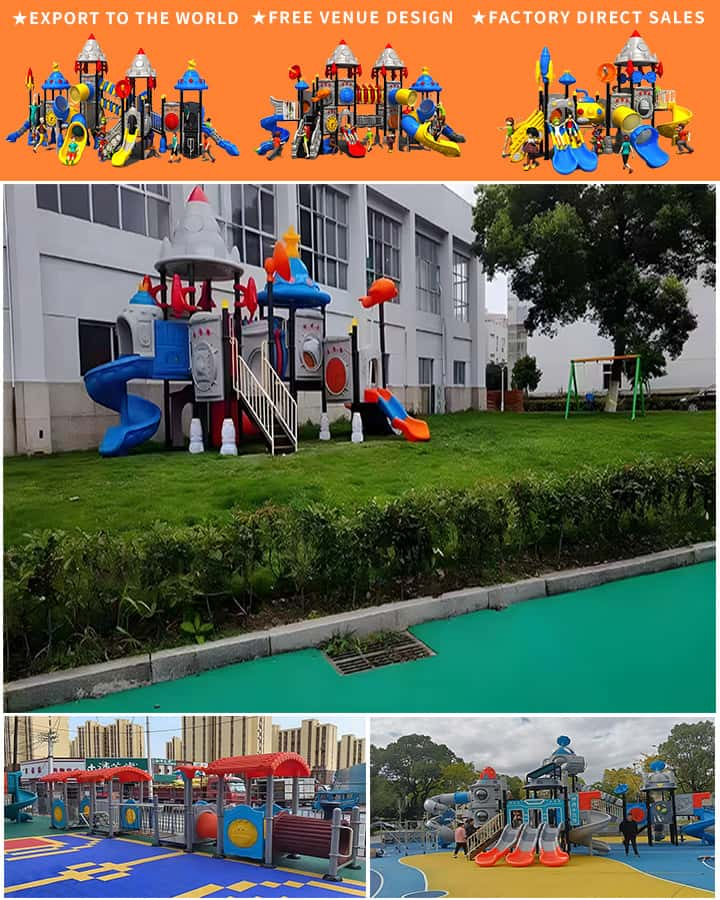Playgrounds have been a staple in communities worldwide, offering children a place to explore, play, and develop essential physical skills. At the heart of these recreational areas lies playground equipment, which plays a crucial role in fostering both fun and development. But what exactly is playground equipment? This article delves into the various types, their benefits, and why they are indispensable for child development.
Understanding Playground Equipment
Playground equipment refers to the structures and devices installed in parks, schools, and other public spaces designed to provide recreational activities and physical exercise for children and sometimes adults. These installations come in a variety of forms, each serving different purposes and age groups, ensuring that there’s something for everyone.
Types of Playground Equipment
Swings: Swings are perhaps one of the most iconic pieces of playground equipment. They come in various designs, including traditional belt swings, toddler swings, and adaptive swings for children with disabilities. Swings help improve balance and coordination while providing sheer joy.
Slides: Slides are another classic piece of playground equipment that children adore. Available in numerous shapes and sizes—such as spiral slides, straight slides, and even water slides—they provide an exhilarating way for children to experience gravity in a safe environment.
Climbing Frames: Climbing frames encourage children to use their upper body strength and develop problem-solving skills. Ladder-like structures, rope climbs, and rock climbing walls are popular variations that cater to different levels of difficulty.
Seesaws: Seesaws offer a social interaction component alongside physical activity. Children learn about balance and timing while having fun with a partner. Modern seesaws also include safer versions with molded plastic seats and handles.
Merry-Go-Rounds: Merry-go-rounds, or carousels, provide a gentle spinning motion. While more common in amusement parks, smaller versions can be found in larger playgrounds, offering children the delight of rotational movement.
Jungle Gyms: Jungle gyms, often made of metal or plastic, feature interconnected platforms, bars, and rings. These structures promote gross motor skill development and encourage imaginative play.
Sandboxes: Sandboxes provide a tactile and sensory experience where children can dig, build, and create using tools like shovels and buckets. They encourage creativity and fine motor skill development.
Spring Riders: Spring riders, also known as bouncing animals or spring rockers, allow children to bounce up and down, mimicking riding on a horse. These pieces enhance core strength and balance.

Benefits of Playground Equipment
The importance of playground equipment extends beyond mere entertainment. These installations offer multifaceted benefits, including:
Physical Development
Engaging with playground equipment helps children develop essential physical skills such as balance, coordination, strength, and flexibility. Activities like climbing, jumping, and balancing improve muscle tone and overall fitness.
Social Interaction
Playgrounds equipped with diverse facilities encourage social interactions among children. Sharing swings, taking turns on slides, and collaborating on seesaws foster teamwork and communication skills.
Cognitive Growth
Interactive elements like sandboxes and jungle gyms stimulate cognitive development. Children learn through hands-on experiences, enhancing problem-solving abilities and creativity.
Emotional Well-being
Playgrounds offer a space for children to express themselves freely and release energy, contributing to emotional well-being. The joy and laughter experienced on playgrounds can significantly reduce stress and anxiety.
Inclusivity
Modern playground designs focus on inclusivity by incorporating adaptive equipment for children with disabilities. This ensures that all children, regardless of their physical abilities, can participate in play and benefit equally from the playground experience.
Conclusion
Playground equipment is more than just a collection of structures; it’s an integral part of childhood development and community life. By providing a safe and stimulating environment, playgrounds help shape well-rounded individuals who are physically fit, emotionally balanced, and socially adept. As communities continue to evolve, so too will the design and functionality of playground equipment, ensuring that future generations reap the same benefits we enjoy today. So, next time you visit a playground, take a moment to appreciate the thoughtful engineering and endless possibilities that each piece of equipment brings to our children’s lives.




